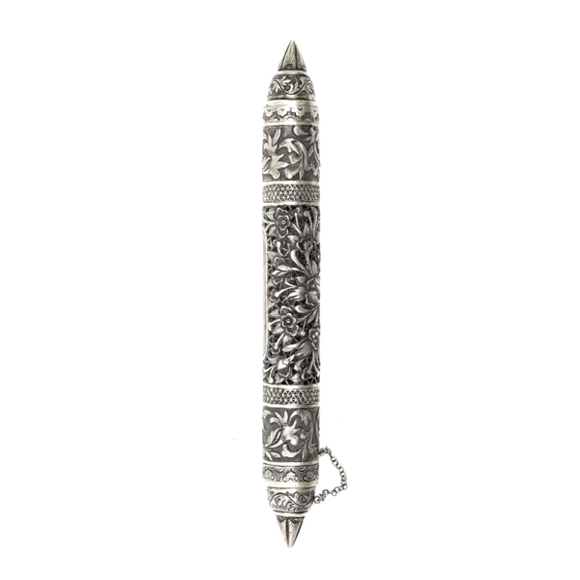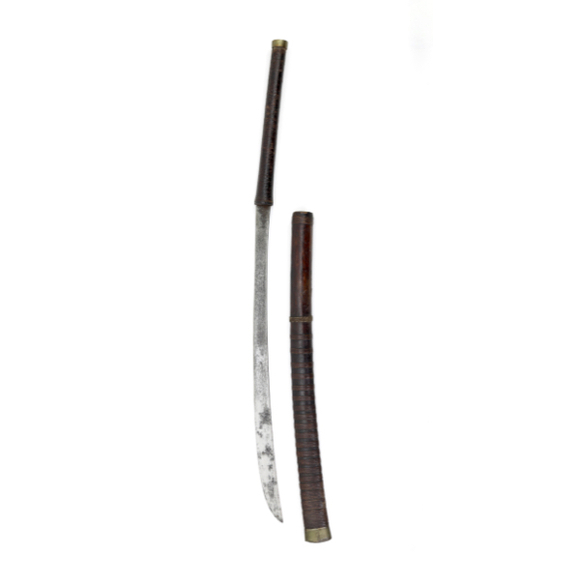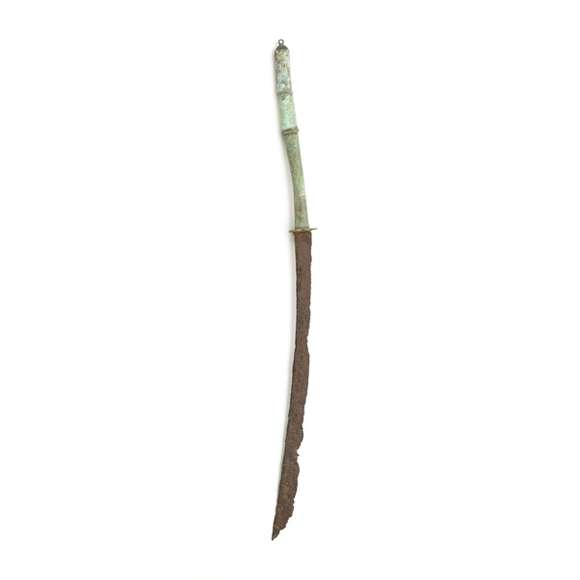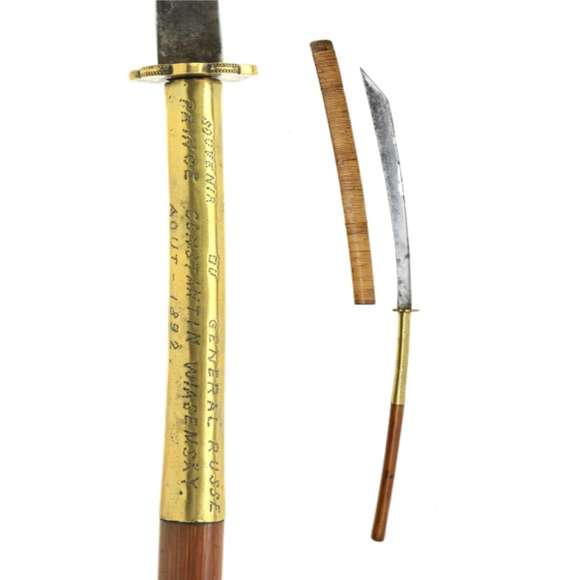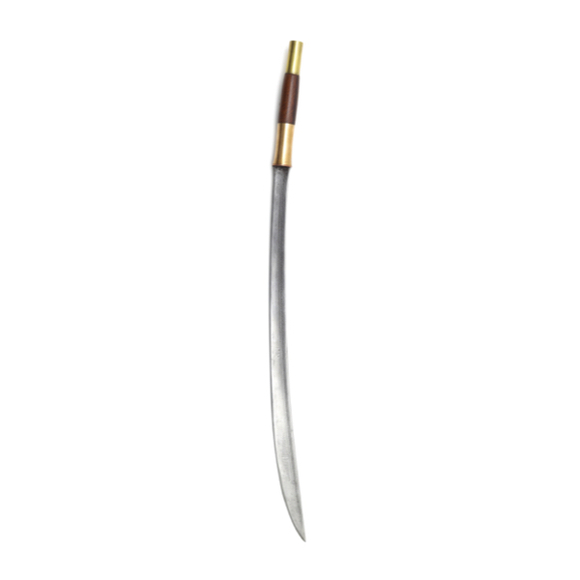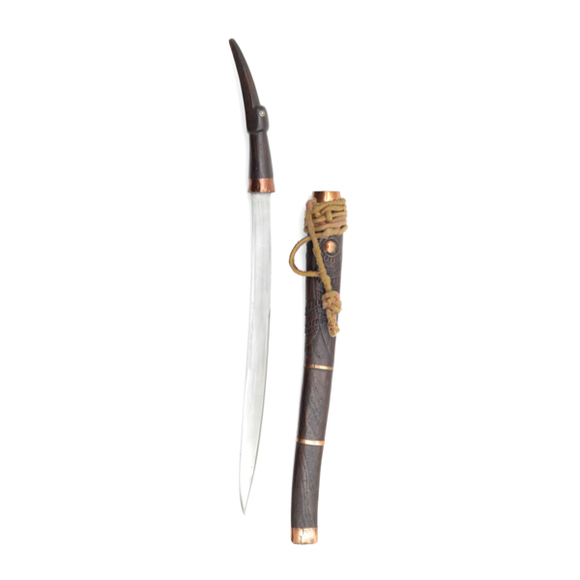For holding and protecting important documents.

Sheathed 90.2 cm
Sword 83.5 cm
54 cm
Base 7 mm
Middle 3 mm
Near tip 2 mm
Base 28 mm
Middle 27.5
Widest 33 mm
510 grams
6.8 cm from hilt
Yunnan / Burma border area
Steel, iron, wood, silver, red foil
Introduction
Among the many peoples that used and produced the dha were the Dai people, which is an umbrella term for a large group of peoplea in Yunnan, Laos, Thailand, and Burma. Those in China are also known as the "Chinese Shan".
We know from the inscription on a presentation dha from a Chinese Shan royal family to a British custom's officer what their swords look like. This sword has since helped identify other swords as being Chinese Shan.1
Defining features are the large, garlic bulb shaped pommel and the distinctive style of silverwork on grip and scabbard.
This example
A fine example, built around a very well-finished blade with a prominent temperline. The blade's surface doesn't show a lot of activity otherwise, this is due to the fact that most of these were made with an outer jacket or high-carbon steel completely covering the inner layering.1
The point is somewhat rounded, and not suitable for the thrust. Many dha from various people in this region have non-thrusting points, one way or the other. A Husa valley dha has a spine that takes a deep curve towards the edge near the point, and most dha in use by the Kachin have flattened tops.
The hilt of typical round cross-section, with large garlic-shaped pommel. The grip section is covered by an intricate braid of silver wire, and site in between decorative bands of silver. Above the grip is an edged silver ring, a divider often seen on these dha. Above that, the grip's cross-section has ten facets. At the top of the handle is a widening part that meets the scabbard.
The scabbard starts round in cross-section and then flattens out towards the end. It is covered in silver sheet, divided into five main segments. A few of the segments have open sections bordered by decorative silver wire braid, through which can be seen a red background. There are some remains of a very shiny red foil.
Comparable examples
Going through some of the old catalogs by famous London based dealer W.O. Oldman, I found two very similar dha offered by him in his March 1906 catalog:

Two Chinese Shan dha from the W.O. Oldman catalog of March 1906.
The catalog entries say:
"2 (9331) Sword; light curved one edged blade; hilt covered silver, large pommel, plaited cane bands on grip; the sheath is almost completely covered with silver, filigree bands, thick red cotton belt attached. Length 33½ inches. £3/3/0."
"3 (9330) Sword; very similar to No. 2, finer specimen, more filigree work. Length 32 inches. £3/10/0"
It is hard to draw an accurate image as to when this style was produced and how long production continued, but we can say for sure that nearly identical work was done at least before 1906.
Condition
Pretty good condition throughout. The usual denting in the thin silver sheet, but no significant losses other than the red foil in the open sections of the scabbard. The blade is in new polish by Philip Tom.
Conclusion
A fine example of a higher quality Dai minority / Chinese Shan dha with well-made, practical blade, mounted beautifully in hilt and scabbard covered with fine silverwork.
Notes
1. See the presentation dha listed on this website.
2. E.N. Bell I.C.S.; A Monograph on Iron and Steel Work in Burma. Rangoon, Superintendent, Government Printing Burma, 1907.


















Collected by a Russian prince from the hill peoples of central Vietnam in 1892.

